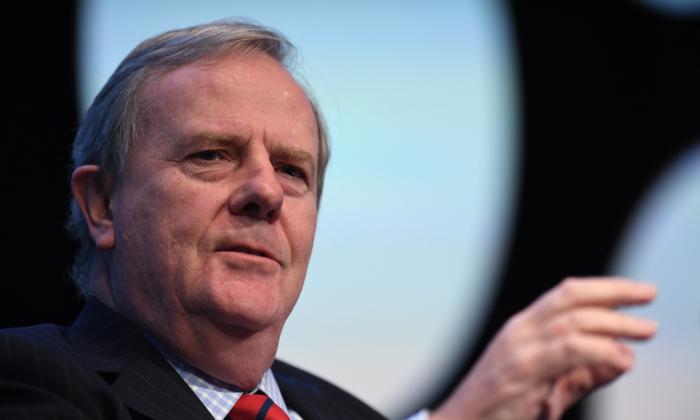The mayor of New Zealand’s biggest city has proposed a staggered household rates increase as part of a long-term budget plan aimed at boosting the city’s coffers, coupled with filling a debt hole by selling or leasing strategic assets.
Released last December, Auckland’s Mayor Wayne Brown’s proposal known as the Long-Term Plan (LTP) 2024-2034, has the provisional approval of councillors after being adopted by the Budget Committee but still requires public consultation.
Its focus is the establishment of a wealth fund for Auckland, known as The Auckland Future Fund, estimated at $3 billion (US$1.9 billion), and includes a plan to lease some land at the centrally-located Ports of Auckland for development.
“Auckland Council has relied on borrowing money to bridge the gap between revenue and expenditure, “said Mr. Brown in November.
“A big part of why revenue is always behind expenditure is because we have large-scale investments that have not generated returns to cover the cost of owning them. Auckland’s strategic assets have been built up over generations. I don’t believe in using these assets for short-term gain, but I do believe in making better use of what we have.”
“Our biggest assets have not performed as well as we could expect from a well-managed diversified fund. While Ports of Auckland is turning around, it still doesn’t cover the average cost of capital. This means the council has lost money and ratepayers are subsidising our ownership of both the port and airport,” said Mr. Brown.
To bring the FTP to fruition, rate rises are inevitable, and Auckland Council has tabled three options for rate rises.
The first would require average rate increases for residential ratepayers of 7.5 percent, 3.5 percent, and 8 percent respectively, for the first three years of 10.
After the initial three years, rates would be capped at no more than 3.5 percent per year going forward.
A second option is according to Mr. Brown for ratepayers to “pay more, get more.” This would see ratepayers take a huge 14 percent hit in the first year, followed by 10 percent in years two and three, settling to five percent per annum afterwards.
A third tabled option is “pay less, get less” and would see rates increase 5.5 percent in year one, 3.5 percent in years two and three, then no more than 1 percent “above CPI inflation thereafter,” said Mr. Brown.

Water rates are also expected to rise after the controversial Three Waters Proposal was scrapped. The scheme, orchestrated by the former Labour-led central government, intended to take the control of water assets away from local Councils that had historically controlled them.
The upgrade of aging infrastructure requires ratepayers to foot the bill, meaning Auckland ratepayers now face an increase of 25.8 percent this year, according to the city’s provider Watercare.
When asked his preference of the options, Mr. Brown told Newstalk ZB he favoured the middle option; “bang in the middle, it’s justifiable, there are no major cuts, there’s a lot of restraint.”
This option would see a combined average rise in rates and water bills of $613 per household.
Improvements to the North Harbour Stadium, a facility on the North Shore, seen by many as a white elephant, also form part of the plan.
One option is a $33 million injection directed towards its development over the next decade. A second option calls for a smaller stadium to be built on the site, with the land freed up for sale or development.
Public consultation on the long-term plan opens on Feb. 28 and feedback must be received by March 28.
At a Council meeting on Tuesday, Mr. Brown said he was anticipating a mixed reaction to the rate rises saying; “There will be some winners and some losers, there'll be some smiling people and some frowning, I suppose.”
“We’re trying to get a broad view across the whole city, whether they think it’s a good move or not.”







